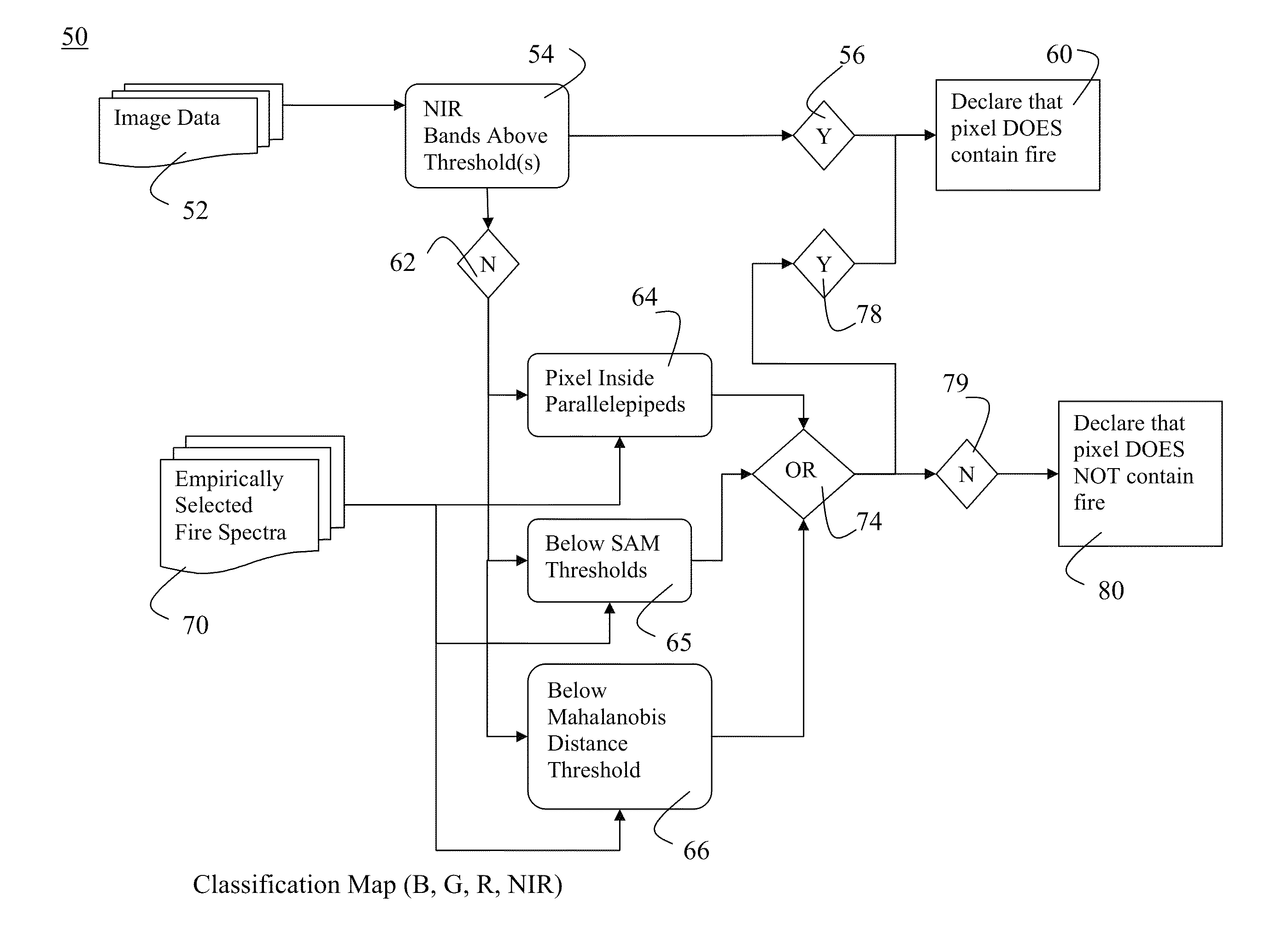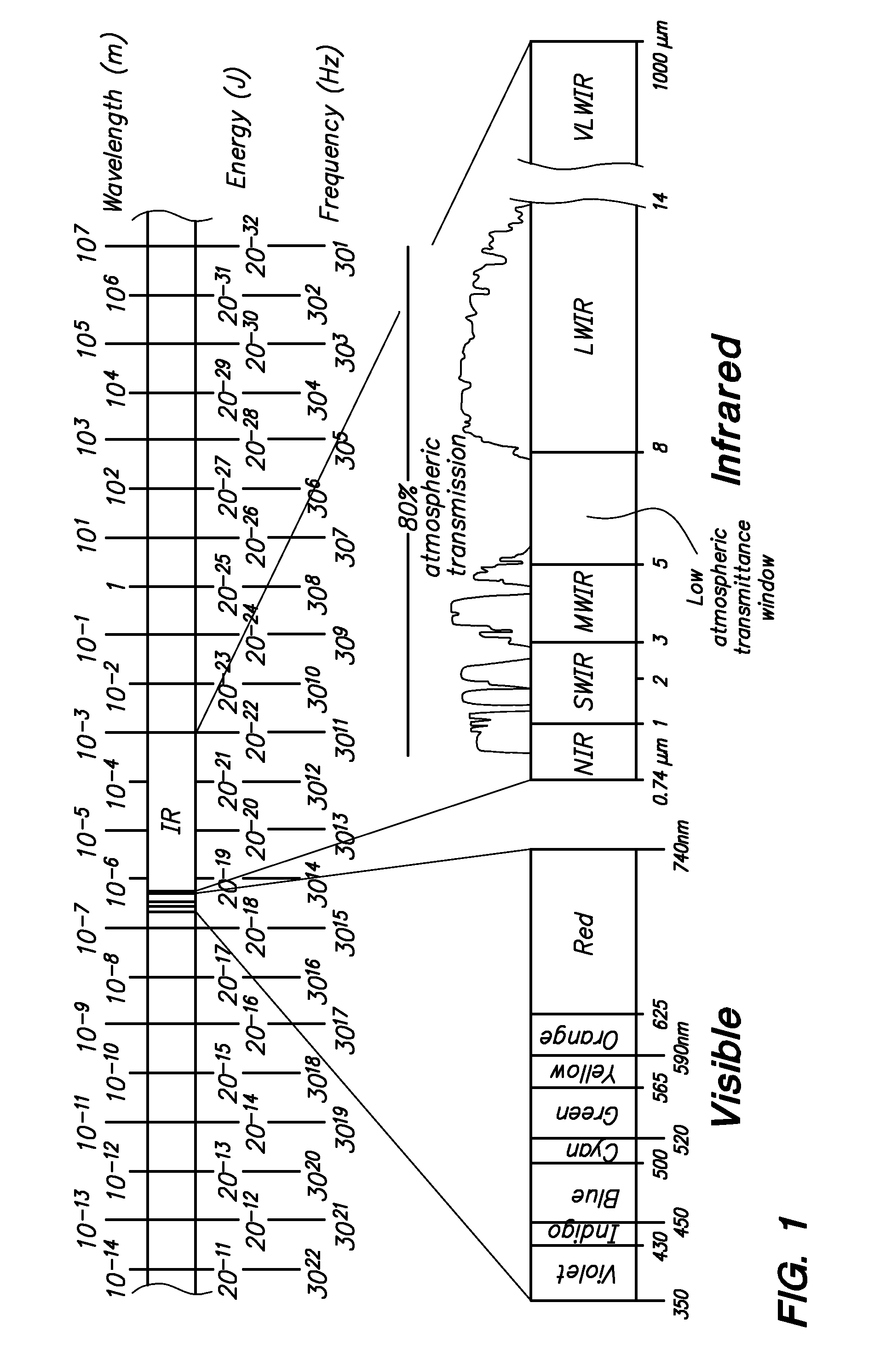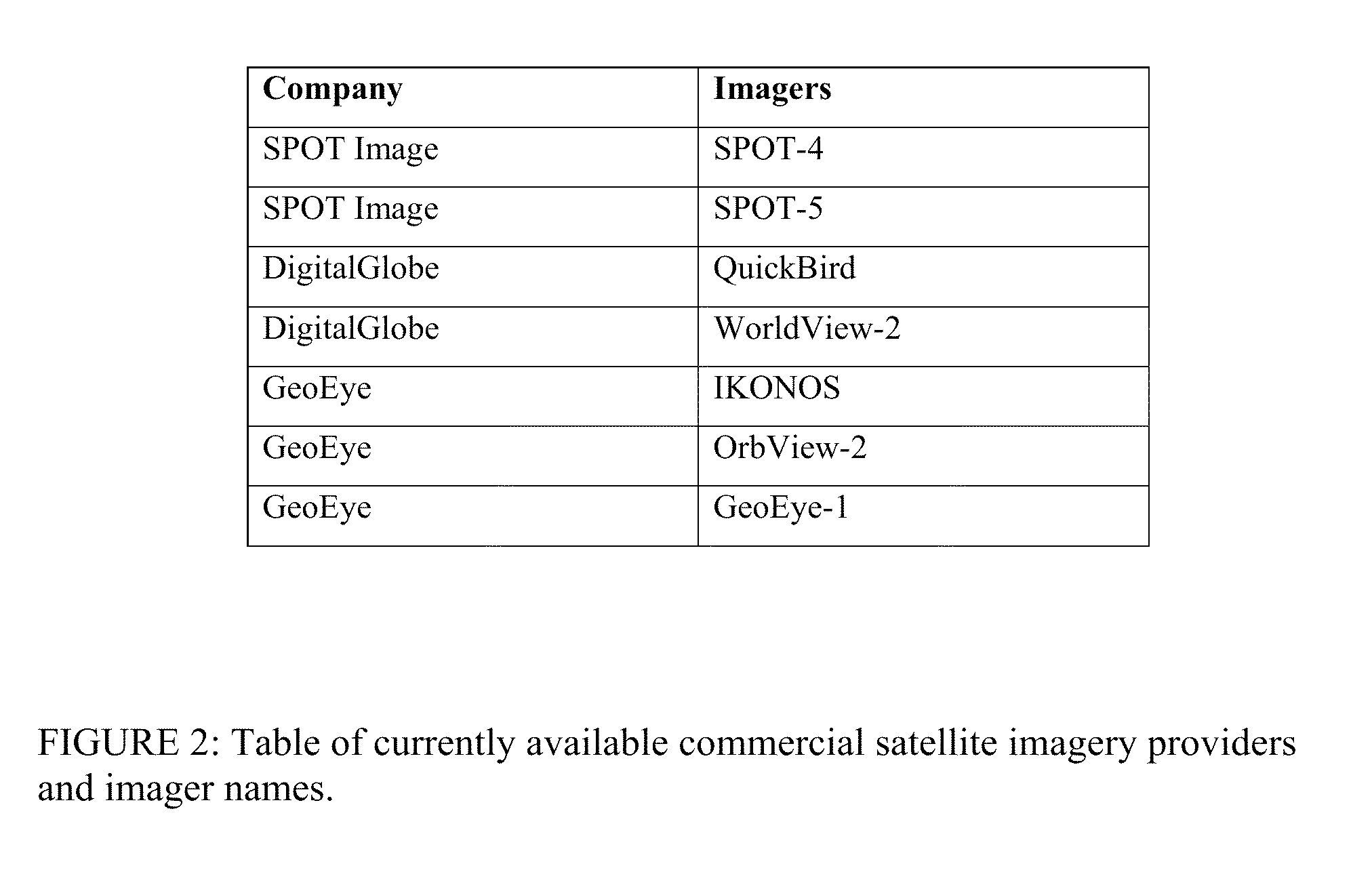Method for detecting and mapping fires using features extracted from overhead imagery
a technology of overhead imagery and features, applied in the field of methods for detecting and mapping fires using features extracted from overhead imagery, can solve the problems of inability to accurately analyze all images on the timescale, process can be very time-consuming, and classification can only be completed by highly skilled analysts
- Summary
- Abstract
- Description
- Claims
- Application Information
AI Technical Summary
Benefits of technology
Problems solved by technology
Method used
Image
Examples
Embodiment Construction
[0023]One purpose of the present invention is to automatically detect and map fires based on information extracted from commercial overhead EO / IR imagery. A table of commercial imagers and the companies that operate them can be found in FIG. 2. Suitable sets of high resolution images with multi-spectral imagery (MSI) are commercially available from various satellite companies shown in FIG. 2, as follows:
[0024]DigitalGlobe Quickbird, with 2.4 m resolution (color) with 4 bands MSI
[0025]DigitaGlobe WorldView-2 with 1.4 m resolution (color) with 8 bands MSI
[0026]SPOT Image SPOT-4 with 20 m resolution (color) with 4 bands MSI SPOT Image SPOT-5 with 5 m, 10 m resolution (color) with 4 bands MSI
[0027]GeoEye OrbView-2 with 1.65 m resolution (color) with 4 bands MSI
[0028]GeoEye GeoEye-1 with 1.65 m resolution (color) with 4 bands MSI
[0029]GeoEye IKONOS with 3.2 m resolution (color) with 4 bands MSI
[0030]The invention has three methods of interacting with the high resolution imagery as set fo...
PUM
 Login to View More
Login to View More Abstract
Description
Claims
Application Information
 Login to View More
Login to View More - R&D
- Intellectual Property
- Life Sciences
- Materials
- Tech Scout
- Unparalleled Data Quality
- Higher Quality Content
- 60% Fewer Hallucinations
Browse by: Latest US Patents, China's latest patents, Technical Efficacy Thesaurus, Application Domain, Technology Topic, Popular Technical Reports.
© 2025 PatSnap. All rights reserved.Legal|Privacy policy|Modern Slavery Act Transparency Statement|Sitemap|About US| Contact US: help@patsnap.com



